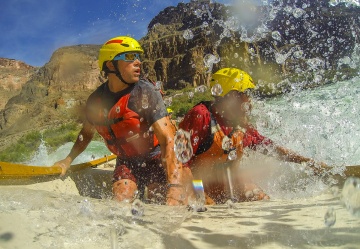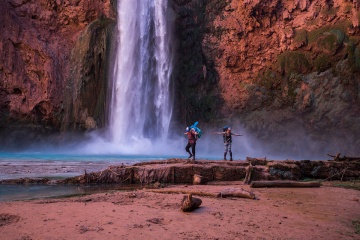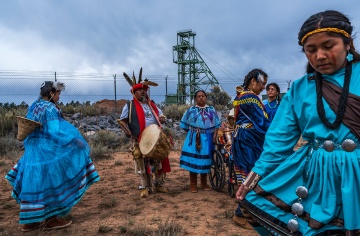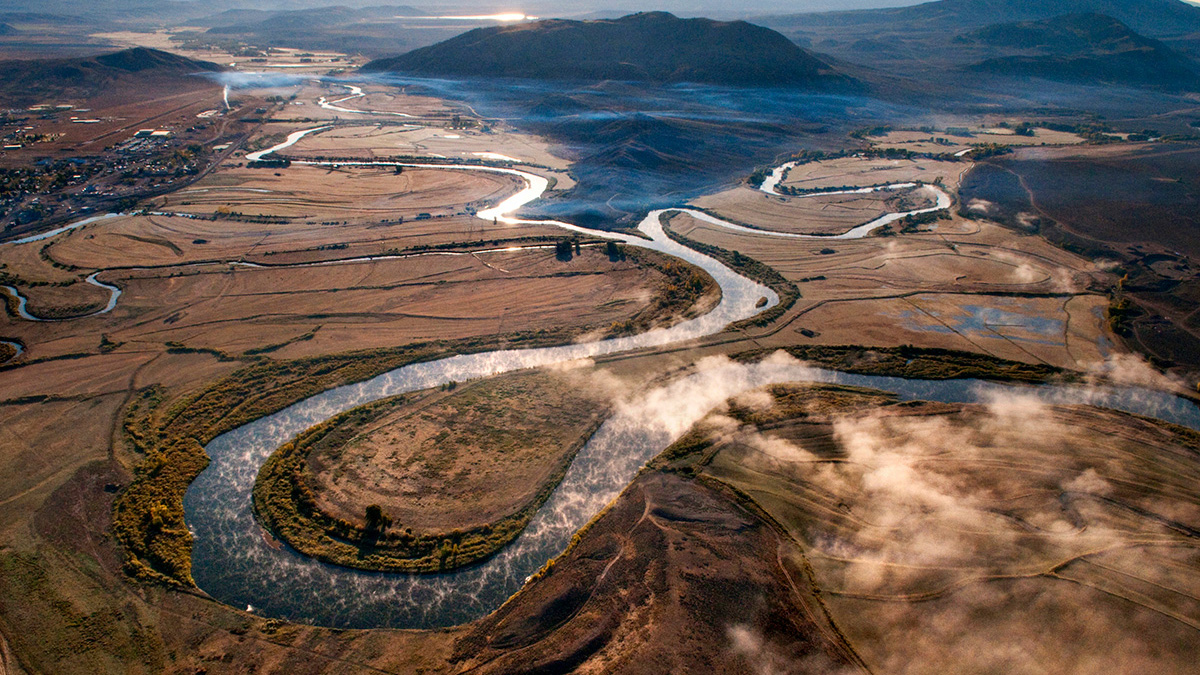Pete McBride’s epic photographic journeys
Photographer Pete McBride used his camera to document the length of the Colorado River.
• December 2018 issue
Documenting the Colorado River and the Grand Canyon
Like most people who grew up in the Western United States, native Coloradan Pete McBride is acutely aware of water. From Colorado to California, life and lifestyle have been shaped by this ever-diminishing resource that provides the lifeblood to communities carved out of the desert, nourishment for farms bullied up from the arid ground, and catalyst for legal disputes between cities, states, and nations. Yet water remains something most people still take for granted, even as reservoirs run dry and aquifers shrink.
McBride, an accomplished photographer with dozens of magazine credits, decided to turn his lens toward Western water’s biggest pipeline, the Colorado River. Looking to combine an examination of the river with his love of adventure, McBride cashed out his savings and launched a year-and-a-half project photographing the river. He looked at several themes throughout the project, including uses by agriculture, recreation, and industry, as well as the environmental condition of the river and where it ends today. (Spoiler alert: The Colorado River no longer reaches the sea. It dries up from over-drainage about 100 miles inland.)

McBride rafted long stretches of the river. He photographed from a single-engine plane piloted by his father. He walked the banks. During a “pulse flow” to release dammed up water, he became the last person to paddle the river all the way to the sea. Always, he looked for stories that weren’t being told. Four years and 1,500 river-miles later, his efforts resulted in an array of stories in Smithsonian, Outside, Stem, The New Yorker, and more; a book “The Colorado River: Flowing Through Conflict” (Westcliffe 2011); a National Geographic speaking tour; three documentaries; and a PBS TV program. Groups interested in the preservation of other major watersheds came calling, leading to more river-related projects, including works on rivers in Africa, Fiji, and India’s famed Ganges River.
“The Colorado River project was an evolving story that led in so many different directions,” says McBride. “That sometimes happens. You find a story that you like, you start with little building blocks, and then it evolves—and you evolve with it. From a photography perspective, I’m constantly thinking about how I can document things in an interesting way to give people a perspective they haven’t had before and make them think about an issue in a new light.”
When he finally wrapped up the Colorado River project, McBride figured he’d move on to something new. “I thought I was done with the Colorado River,” he says, “but the Colorado River wasn’t done with me.”

McBride had been hearing about changes to the Grand Canyon and how development could be altering the landscape around the Colorado River’s most iconic conduit. So he came up with a plan to walk the length of the canyon, more than 700 miles, much of it without a trail. He traded his raft for hiking shoes and set out to photograph the full expanse of the canyon as a way of highlighting the challenges faced by the U.S. National Parks at a time of increasing land development and industrial pressure. “I thought it would be fun and interesting,” he says, “but it turned out to be about 10 times more difficult than anything else I’ve done in my life.”
The resulting collection of images presents a rare look at one of America’s signature landscapes in a state that may never be seen again if certain interests get their way.
“This was a unique opportunity to showcase something that very, very few people have seen firsthand,” says McBride. “More people have orbited the Earth in space than have completed this walk.” The project led to a 28-page feature in National Geographic, a speaking tour, another book (“The Grand Canyon: Between River and Rim,” Rizzoli 2018), a feature-length documentary (“Into the Canyon,” 2019), media outreach with companies such as Adorama, and McBride’s designation as one of National Geographic’s “adventurers of the year,” along with his hiking companion and author Kevin Fedarko.
PLANNING A GRAND PHOTO PROJECT

Planning a massive undertaking like McBride’s Colorado River or Grand Canyon projects can be overwhelming. For those who want to make the commitment to a life-changing experience, McBride reassures that it’s doable—so long as you break it down into steps.
Determine your story. “It all starts with finding a story that you care about,” says McBride. “Then you need to think about how you can do it differently.” For example, a lot of people have photographed the Grand Canyon, but very, very few have documented its entire length on foot.
Break it down to manageable parts. You don’t have to close your studio and go on the road for two years. Consider making multiple smaller trips over the course of several years, compiling the images for your story bit by bit.
Find a publishing outlet and partners. It helps to get funding, support, or at least the assurance of a media outlet to tell your story. If you’re new to running a long-term project like this, be prepared to demonstrate your capabilities, your commitment, and the feasibility of your concept. A strong portfolio with examples of similar past work is also important. Teaming up with other content providers like writers, filmmakers, or artists can also help immeasurably.
Think about other uses for your content. Everyone wants good stories and rich, multi-media content. Approach foundations, corporations, media companies, camera manufacturers, and photo equipment companies. Think of ways to repurpose your content.
Figure out your minimum threshold. Even well-established project photographers don’t always get their full funding up front. Determine how much financial support you need to get started and how much you’re willing to risk on the bet of getting more funding down the road or finding other revenue streams from the project.
Team up with nonprofits. Charitable organizations working in areas related to your project can make great partners. They may not have the money to fund your project, but they can help get your message to the right people and dramatically expand your reach. In return, your content can strengthen their marketing and outreach.

Think about multiple media. Use as many tools as you can to tell your story. The more options you can provide your potential partners, the better.
Leverage social. The traditional publishing model has changed dramatically, even gone away in some cases, but the opportunities presented by social media are immense. Having an established voice in social media can help recruit partners to your project and build a following for your work.
Consider the spinoffs. Success can lead to many additional opportunities, which could provide years of work and additional storytelling outlets.
Try something new. “I’ve taken a lot of risks on new ideas that were different, unproven,” says McBride. “It can be scary. It can be a difficult road. But those projects have always been the most rewarding.”
RELATED: Why Pete McBride used minimalist gear for an epic journey
Jeff Kent is the editor-at-large of Professional Photographer.


 View Gallery
View Gallery


